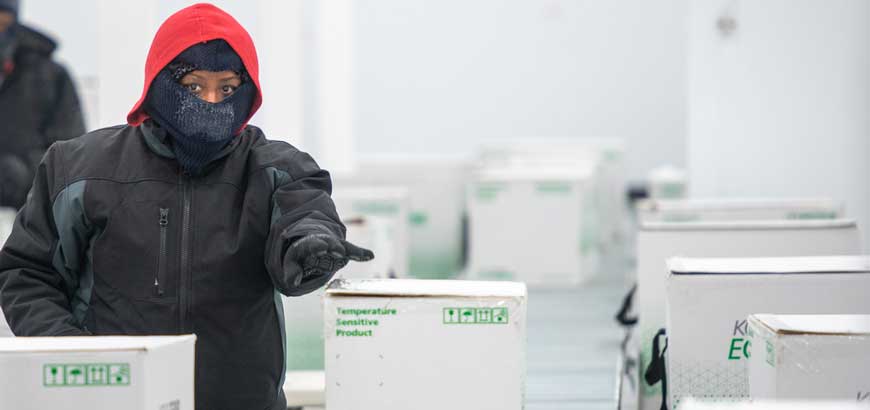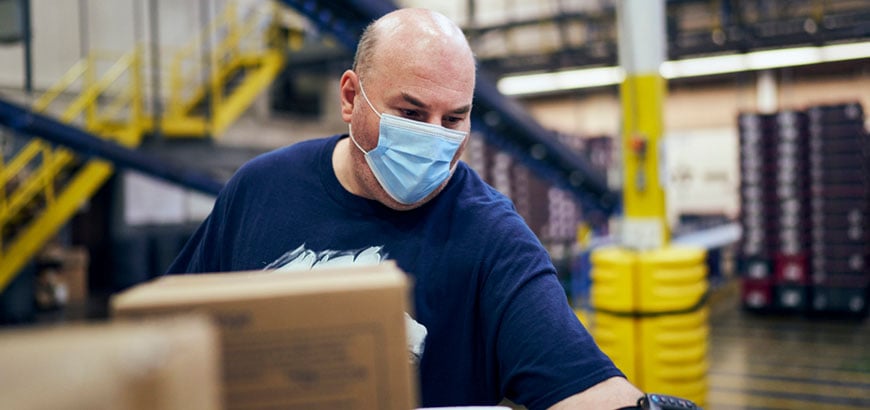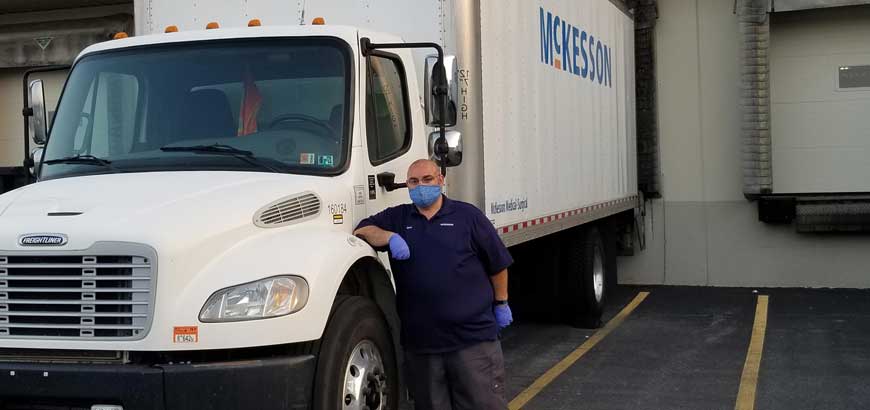Read time: 4.5 minutes
It is called the cold chain. This is a term that denotes a temperature-controlled supply chain – a series of actions and equipment intended to keep certain products at low temperatures. And when it comes to supporting COVID-19 vaccines, the cold chain is one of the key components at the center of that effort.
The idea of managing temperature controls throughout a supply chain is not a new one. Our grocery stores are filled with frozen food items, meats and produce that are all shipped and stored at temperatures that prevent them from spoiling. And our pharmacies and hospitals receive medications every day that are kept at specific temperatures.
To successfully distribute temperature-sensitive products, the cold chain must account for numerous variables, including what temperature range is needed to ensure a product’s viability, where the product will be shipped, the mode of shipment, and how long the trip will last. McKesson – a leading distributor of medications and medical supplies in the U.S. – has deep experience managing thousands of temperature-sensitive shipments every day. And as a distribution partner for the U.S. government’s COVID-19 vaccine program, the company will soon leverage that expertise when it deploys cold chain processes for the vaccines as well.
McKesson and its partners will employ a variety of technologies and processes to maintain temperature conditions as the COVID-19 vaccines travel along their journey from the manufacturer to McKesson and finally to the point of administration.
“We recognize the importance of managing the cold chain to support our nation through this challenging time,” says Chris Armstrong, McKesson’s vice president, operations. “From our partnership with the Centers for Disease Control and Prevention (CDC), the manufacturers of the vaccines and various technology partners, we’ve built a best-in-class approach to handle the different temperature requirements of the frozen and refrigerated COVID-19 vaccines.”
The First Journey: From Manufacturer to McKesson
As part of the clinical development process for the vaccines, each manufacturer determines the temperature requirements to maintain their vaccine’s effectiveness throughout its lifecycle. To ensure that McKesson is prepared to distribute them as soon as they’re approved by the FDA, the manufacturers and CDC have already provided guidance to McKesson on the temperature requirements for the vaccines – either refrigerated (2° C to 8° C) or frozen (-20° C). Pfizer is handling the distribution of its ultra-frozen vaccine directly.
McKesson currently operates as the centralized distributor for the CDC’s Vaccines for Children Program, shipping over 70 million temperature-controlled vaccine doses annually. The company plans to leverage this extensive experience while making the necessary adjustments to account for unique aspects of the cold chain processes for the COVID-19 vaccines.
“What’s particularly unique about the COVID-19 program is the scale,” Armstrong adds. “That’s why we’ve added new distribution centers, hired thousands of people, and adapted our existing processes to execute on the vaccine storage and distribution needs at an extremely high volume.”
“We recognize the importance of managing the cold chain to support our nation through this challenging time.”
Managing Cold Chain at the Distribution Centers with Custom Solutions
The technology required to manage the cold chain often includes specialized equipment, including refrigerators and freezers. Yet for an endeavor of this magnitude, these core items aren’t the ones you could buy at a local appliance store.
“We’ve built custom, large-scale freezers and refrigerators in our distribution centers so we can store tens of millions of vaccine doses at the right temperature,” says Todd Kleinow, McKesson’s vice president, strategic distribution operations. “We’ve also added sophisticated controls, monitoring and alarms so we can make sure the appropriate conditions stay consistent.”
When the vaccines first arrive at a designated distribution center, workers will use monitoring systems to verify the appropriate temperatures were maintained in transit from the manufacturer. McKesson teams will then move the vaccines into either the freezer or the refrigerator for storage prior to distribution.
Once an order comes in from the CDC, material handlers will begin to pick and pack vaccine doses in insulated coolers specially designed to maintain the appropriate temperature.
In addition to using specially designed shipping coolers, each vaccine shipment will include appropriate temperature monitor(s) to validate the temperature during shipment. As an example, for the Moderna vaccine, a digital temperature monitor will be packed inside each cooler to provide those receiving and administering the vaccine the confidence that the vaccine’s cold chain was maintained during shipment.
“All of the technologies we are using throughout the cold chain process have a long-standing track record,” says Kleinow. “And, we have established back-ups of the back-up plans in case we run into any challenges along way.”
The Final Journey: From Distribution Centers to Vaccine Administration Sites
After the coolers are packed, the shipments will typically go out within 24 hours from when the orders were first received. Advanced tracking devices will be used for all COVID-19 vaccine shipments to provide the highest level of visibility within the carriers’ delivery networks.
Finally, the hospitals, pharmacies or other care facilities will receive the vaccines and become responsible for storing the doses as indicated by each manufacturer.
“We all understand the importance of making sure that COVID-19 vaccines remain viable until the time they are administered,” says Armstrong. “Helping maintain the integrity of the cold chain is critical to that mission, and McKesson has the breadth and depth of experience, as well as the passion for this important cause to get the job done.”
Originally published December 9, 2020.




Share
Post
Post
Email